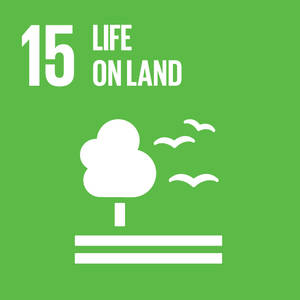What is REDD+?
REDD+ is the term given to the concept of reducing emissions from deforestation and forest degradation, plus the sustainable management of forests and the conservation and enhancement of forest carbon stocks; it is part of the negotiation process of the United Nations Framework Convention on Climate Change (UNFCCC). Globally, deforestation contributes about one-fifth of all greenhouse gas (GHG) emissions, and REDD+ is therefore central to global efforts to mitigate climate change. The aim of REDD+ is to encourage developing countries to contribute to climate-change mitigation by 1) reducing GHG emissions by slowing, halting and reversing forest loss and degradation; and 2) increasing removals of GHGs from the atmosphere through the conservation, management and expansion of forests.
The contribution of REDD+ to reducing GHG emissions and increasing forest carbon sinks is recognized explicitly in the Paris Agreement. This agreement, which was struck by the Conference of the Parties to the UNFCCC in December 2015, encourages all countries – both developed and developing – to take action to implement and support the Warsaw Framework for REDD+ and other relevant decisions already agreed under the UNFCCC.
When the Paris Agreement was reached in 2015, the Green Climate Fund was given an important role in serving the agreement and supporting the goal of keeping climate change well below 2 degrees Celsius. The Green Climate Fund (GCF) is a global fund created to support the efforts of developing countries to respond to the challenge of climate change. It specifically supports countries’ REDD+ efforts, both early phases of REDD+ and results-based payments for forest emissions reductions. It is expected that the GCF will increase access to finance for REDD+ activities. The GCF is committed to liberating the potential of the private sector. It can finance private sector projects relating to mitigation and adaptation activities at all levels. For instance, it can support sustainable agriculture practices, expansion of forest areas, deforestation-free supply chains, etc. (see the Climate Change Adaptation and Mitigation module for additional information).
REDD+ and SFM
REDD+ and SFM
The aim of sustainable forest management (SFM) is to maintain and enhance the multiple values of forests over generations. It is, therefore, fundamentally important for REDD+; in many countries it will be an essential means for achieving the objectives of curbing emissions from deforestation and forest degradation and conserving, managing and enhancing forest carbon stocks. The lessons learned and knowledge generated in the implementation of SFM in past decades, including through community forestry and multistakeholder participatory approaches, will be crucial for the on-the-ground implementation of REDD+.
REDD+ offers opportunities for re-creating forests where they have been lost or degraded and thereby bringing more land under SFM. REDD+ may also generate additional revenue to broaden the financial base for forest conservation and sustainable management, increase the benefits deriving from forests and trees, and encourage the wider uptake of SFM.
Although REDD+ is a relatively new process, the goals of reducing deforestation and forest degradation and conserving and expanding forests are themselves not new. The wealth of knowledge and experience on SFM – as reflected in the tools and cases in this and related modules – offers a substantial base on which to build. Nevertheless, more knowledge is required on both SFM and REDD+, and science has an important role to play.
SFM and REDD+ objectives can be achieved most effectively by exploiting synergies between the two concepts. Experiences from SFM can contribute to the design and implementation of effective REDD+ strategies, while REDD+ architecture, actions and lessons can contribute to achieving the objectives of SFM.
Why is REDD+ of interest to forest and land managers?
Why is REDD+ of interest to forest and land managers?
REDD+ may be of interest to forest and land managers because it will help them:
- engage in multistakeholder discussion platforms through national REDD+ processes and thereby contribute to strategy development, the identification and prioritization of policies and measures (known as PAMs), especially those related to forests, cross-sectoral coordination, greater transparency in the allocation of national funds, and overall decision-making;
- contribute to the implementation of national strategies on REDD+ and other climate-change mitigation efforts;
- reverse deforestation and forest degradation on their lands and increase productivity;
- bring low-productivity agricultural lands under complete or partial tree cultivation; and
- gain access to new or additional financial resources and incentives (e.g. GCF) to support the implementation of forest management plans, to embark on forest landscape restoration, to enhance and diversify forest related economic activities, and/or to engage with deforestation-free supply chains.
REDD+ can be combined with other legitimate forest and land management objectives that do not conflict with REDD+ processes and objectives. The evolving mechanism for sustainable development established in the Paris Agreement can open up exciting opportunities for voluntary cooperation on some REDD+ activities.
To date, most countries have focused on getting ready for REDD+. Even in the readiness phase, however, forest and land managers may benefit from incentives, capacity development and services by contributing to REDD+ demonstration activities (see examples in the cases section). Demonstration projects serve to explore the potential of REDD+ and generate experiences until the enabling conditions for REDD+ are fully in place at the national and international levels. They facilitate innovation and learning and build the credibility of the concept.
Countries can strengthen the enabling environment for REDD+ by addressing, for example, governance, tenure rights, policies and regulations, fiscal incentives, access to financial services, transparency and participatory decision-making – all of which can have positive impacts on forest managers and their efforts to implement SFM. Countries may also include actions among their PAMs that support the engagement of large and small private actors – including forest and land managers – in REDD+.
To benefit from REDD+, forest and land managers may wish to explore:
- whether they can contribute to the formulation of national REDD+ strategies, reflecting their interests and concerns;
- whether their countries have already defined national REDD+ strategies and whether SFM is part of the planned PAMs. Forest and land managers may be able to contribute to the implementation of REDD+ strategies (benefiting from possible incentives), as well as take advantage of policies aimed at strengthening the enabling environment or facilitating the engagement of private actors in REDD+ (e.g. normative changes to favour the marketing of products generated by SFM combined with capacity strengthening to reduce illegal logging and unfair marketing strategies);
- whether their countries have established REDD+ benefit-sharing mechanisms (e.g. payments, services and projects), which may provide incentives for their own contributions to REDD+; and
- whether the monitoring, measuring, reporting and verification system that countries need to develop for REDD+ provides useful data for forest management planning and monitoring.
It may not be possible to achieve SFM and REDD+ goals through actions taken in the forest sector alone. A landscape approach involving good governance, land-use planning, and the well-designed coordination of the various land-use sectors is crucial for providing an adequate framework for tackling the drivers of deforestation and forest degradation.





